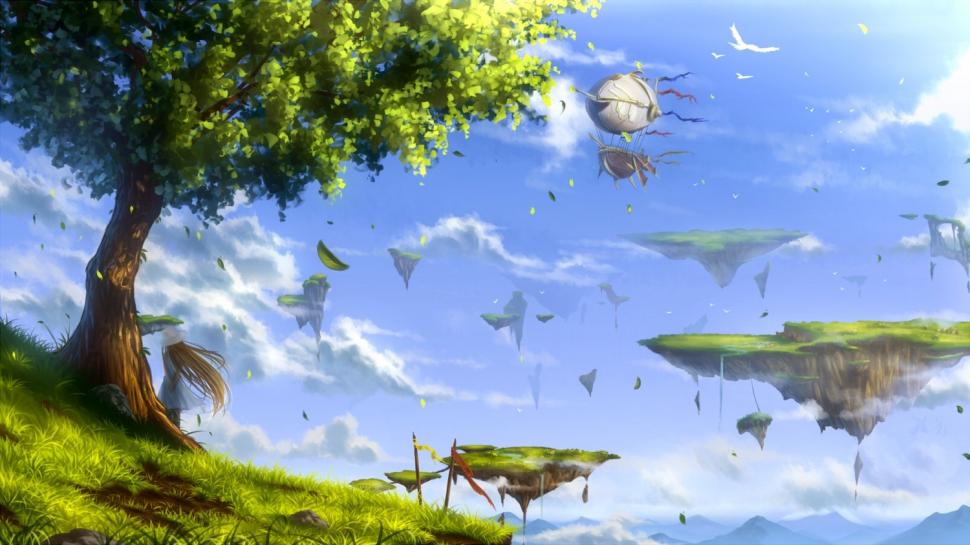The hjaric are an amphibious race of humanoids found on the various floating water-islands found through out the skies. The decedents of members of the Precursor Race who were trapped in some of the harshest conditions, the modern hjaric have gained a reputation for tenacity, discipline, and ruthlessness.
This brutal history of inter-tribal warfare and strict hierarchies resulted in a people who are highly trained, fiercely territorial, and more than willing to turn to violence if necessary. While different clans of hjaric have different philosophies, methods of warfare, intentions, and outlooks on off-islanders, war, combat, and violence permeates hjaric culture in multiple levels.
Hjaric also have a strong connection to elemental water, able to cast a limited amount of elemental magic to manipulate both the world around them and their own physiology for limited periods of time.
Basic Information
Hjaric are light-blue skinned humanoids with green hair, webbed hands and feet. Their teeth are shark-like, and regrow quickly. They have gills, both on the side of their neck, and also below their arms on either side of their torsos. Spots like freckles are common, although these spots are darker blue.
Hjaric are born with retractable membranes in their ear drums, in their nostrils, and in their throats. When underwater, these membranes block water from entering their bodies, and can remain in place until consciously retracted. The flap in their throat is a particularly fascinating adaptation, as it opens briefly whenever the hjaric speaks underwater, allowing air (absorbed by the gills) to escape for the purposes of speaking.
Hjaric give birth to live young, with a gestation period of roughly 280 days.
Newborn Hjaric are unable breathe air for the first few years of their life, and so, must stay constantly submerged in water until they've learned to retract their sealing membranes. They develop at roughly the same speed as
Sapie, and live for roughly 130 to 160 years.
Hjaric need roughly the same amount of food a day as
Sapie, around 2000 calories on average per day. Unlike Sapie, and most of the other races, Hjaric can actually consume meat raw, although they prefer the taste of cooked meat, which to them is a delicacy.
Additional Information
Hjaric social structure favors ridged systems that mirror military units. Families, traditionally family built on heterosexual coupling, form the bedrock of this social structure, as larger groups are often connected through complex marriage contracts, particularly among the ruling elite.
Society is stratified between distinct social classes, with little mobility outside of marrying up or down within the larger culture.
Hjaric culture is also notably sexist, as it values males over females in almost every way. While all hjaric receive some combat training, traditionally hjaric males are pressured to be warriors, while hjaric females are pressured into being crafters and producers. Women are also used in marriage contracts to secure alliances between different political factions.
The only exception to these restrictive gender norms are those who show potential for greater magic and are brought into the druidic order known as the
Men of the Waves. Despite their name, the Men are made up of all genders, including those who identify as neither male or female.
Hjaric have slightly better hearing than the other races, particularly on land, as they have adapted to be able to better hear under water.
Civilization and Culture
Like most other races, the hjaric transitioned into their current form by the end of the first century, influenced by the energy of elemental water. The time before their current forms was a bloody one, as the islands on which they found themselves were small scraps of land or coral beds that sat above the water, with little space to go around. The hijaric descended into a century long tribal war, as the survivors split off into dozens of different groups, dividing their islands into small zealously defended fiefdoms. The fighting was even worse during
Conjunctions, as the tribes would strike against the other water-islands, claiming slaves and territory.
Food was scarce, and so the tribes that survived were those who lived near the coasts, and were thus able to exploit the large populations of fish that lived in the later and migrated between islands during a
Conjunction. It was these people on the coasts who first began to change, and used their new adaptation to expand downward, taking over the unexplored waters below the chunks of land upon which the other tribes were confined. This gave them much more access to fish, as well as more space to grow their population, and new sources of underwater vegetation for food. Once power was consolidated among these coastal tribes, it was quickly divided once again, a cycle which seems to happen fairly frequently within hjaric culture.



Comments